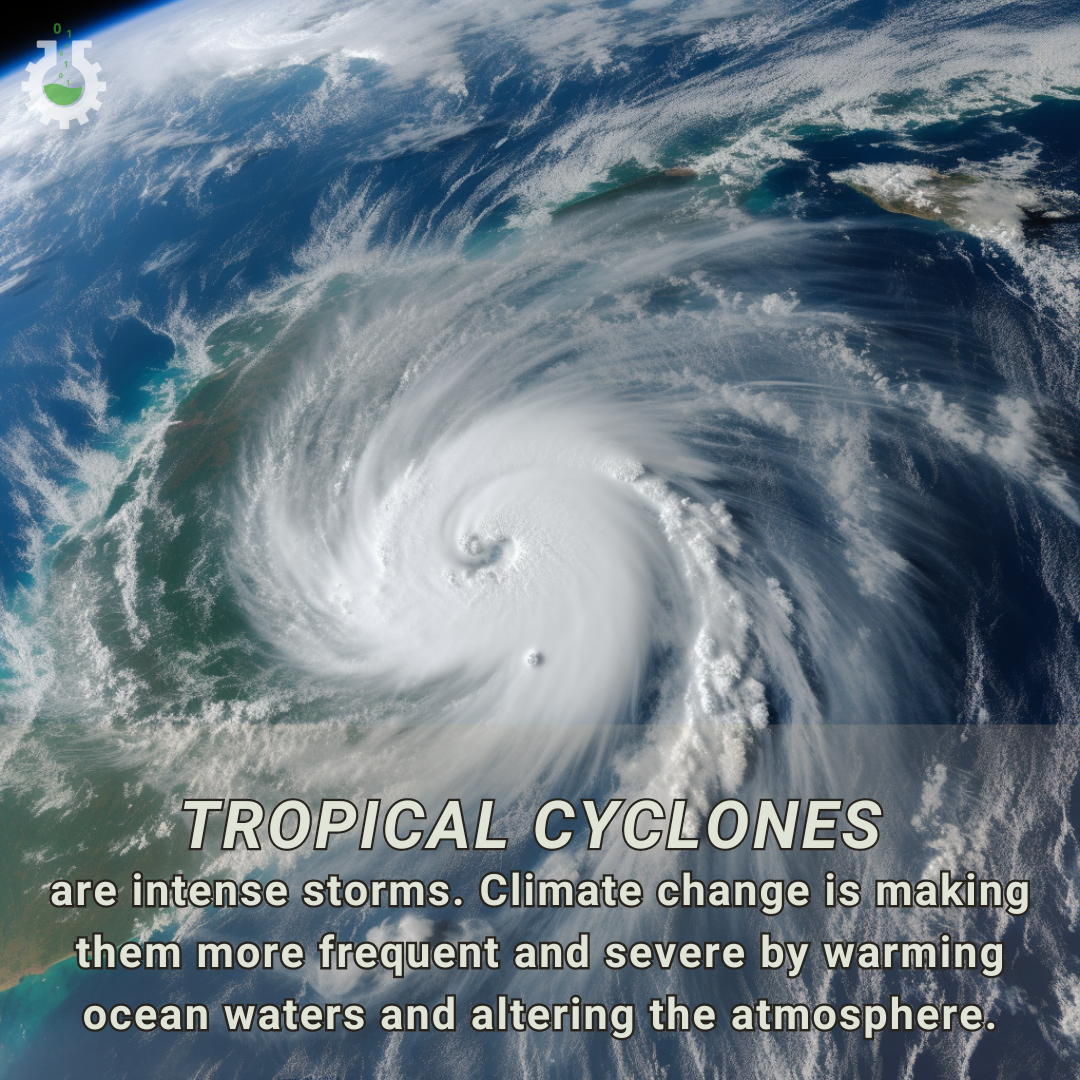July 30, 2024
Climate Change Poster Collection of the Day – Tropical Cyclones
Book a Demo
Today’s Climate Change Poster Collection highlights Tropical Cyclones, also known as hurricanes or typhoons depending on their geographic location, are among the most formidable and destructive natural phenomena on our planet. These powerful storms are characterized by intense winds, heavy rainfall, and storm surges that can lead to catastrophic damage to coastal regions and beyond. The intricate relationship between tropical cyclones and climate change has become a focal point of scientific research, as the warming climate has the potential to alter the behavior, frequency, and intensity of these storms in profound ways. Understanding this connection is crucial for developing effective strategies to mitigate their impacts and protect vulnerable communities.
At the heart of the connection between tropical cyclones and climate change are the rising sea surface temperatures, a direct consequence of increased greenhouse gas emissions. The oceans absorb much of the Earth’s excess heat, leading to warmer waters that provide more energy for tropical cyclones to form and intensify. This additional energy can result in more powerful storms with higher wind speeds and greater precipitation. While the overall frequency of tropical cyclones may not change significantly, the proportion of high-intensity storms—categories 4 and 5—could increase. These supercharged storms pose a greater threat to life and property, as they are capable of causing widespread devastation.
Another critical aspect of this relationship is the impact of rising sea levels, another byproduct of global warming. As polar ice caps and glaciers melt, and as seawater expands due to thermal expansion, global sea levels are rising. This exacerbates the impact of storm surges associated with tropical cyclones, leading to more severe coastal flooding. Coastal communities, particularly those in low-lying areas, are at heightened risk of inundation, which can result in loss of life, displacement of populations, and extensive damage to infrastructure. The combination of stronger storms and higher sea levels creates a dangerous synergy that amplifies the destructive potential of tropical cyclones.
The atmospheric conditions that govern the development and behavior of tropical cyclones are also influenced by climate change. Changes in wind patterns, humidity, and atmospheric pressure can alter the formation and trajectory of these storms. For example, shifts in the jet stream and other large-scale atmospheric circulation patterns can influence where and when tropical cyclones form, as well as their paths. This means that regions that historically have not faced significant cyclone threats could become more vulnerable in the future. Understanding these changes is critical for improving predictive models and early warning systems, which are essential for preparing and protecting communities.
The socio-economic impacts of intensified tropical cyclones are profound and far-reaching. Agriculture, infrastructure, and human health are all affected by these powerful storms. In vulnerable regions, where resources and adaptive capacity may be limited, the consequences can be particularly severe. Crop destruction and soil erosion can lead to food insecurity, while damage to infrastructure such as roads, bridges, and power lines can disrupt essential services and economic activities. Public health is also at risk, as flooding and waterborne diseases can spread more easily in the aftermath of a storm. The economic costs of rebuilding and recovery can be staggering, placing a significant burden on governments and communities.
As the connection between tropical cyclones and climate change becomes increasingly clear, the urgency for robust climate action and adaptive strategies grows. Reducing greenhouse gas emissions to limit global warming is a critical step in mitigating the impacts of climate change. At the same time, enhancing resilience to tropical cyclones through improved infrastructure, better land-use planning, and effective early warning systems is essential for protecting lives and livelihoods. Investing in research to better understand the dynamics of tropical cyclones in a changing climate will also play a key role in developing more accurate predictive models and informed policy decisions.
The relationship between tropical cyclones and climate change is complex and multifaceted, with significant implications for both the environment and society. As the planet continues to warm, the behavior and impacts of these powerful storms are likely to change, posing new challenges and risks. Addressing these challenges requires a comprehensive approach that includes both mitigation and adaptation strategies. By taking proactive steps to reduce greenhouse gas emissions and enhance resilience, we can better prepare for the growing threat of tropical cyclones in a warming world and safeguard the well-being of communities around the globe.
Discover an inspiring collection of climate change poster.



